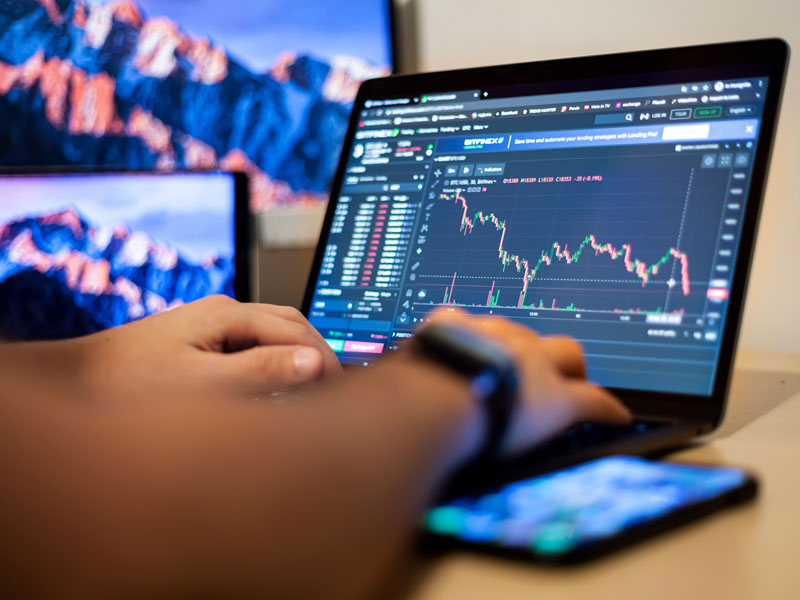
In the dynamic realm of financial trading, automatic forex trading latam-webtrading.com stands out as a vital player. Automatic forex trading has revolutionized the way traders engage with the forex market, providing opportunities that were once only available to a select few. Through the use of sophisticated algorithms and technology, traders can capitalize on market opportunities with unprecedented speed and efficiency. This article aims to delve into the intricacies of automatic forex trading, exploring its benefits, practical strategies, and how aspiring traders can embark on their journey in this exciting field.
Understanding Automatic Forex Trading
Automatic forex trading, also known as algorithmic trading, refers to the use of computer programs and algorithms to execute trades automatically on behalf of a trader. The algorithms make decisions based on predefined criteria, such as market conditions, historical data, and price movements. This eliminates much of the emotional bias that can influence trading decisions and can lead to more consistent results.
Advantages of Automatic Forex Trading
- Speed and Efficiency: Algorithms can analyze vast amounts of data and execute trades within milliseconds, allowing traders to take advantage of fleeting market opportunities that manual trading might miss.
- Emotionless Trading: Automatic trading systems operate based on strict criteria, removing emotional factors that can lead to impulsive decisions and potential losses.
- Backtesting: Traders can test their strategies on historical data before deploying them in live markets, helping to refine their approach and improve success rates.
- Diversification: Automatic trading enables traders to manage multiple accounts and strategies simultaneously, increasing diversification and potentially reducing risk.
How to Get Started with Automatic Forex Trading
Getting started with automatic forex trading involves several key steps:
- Education: Understanding forex markets and trading principles is crucial. Aspiring traders should familiarize themselves with concepts such as currency pairs, pips, leverage, and margin.
- Choosing a Trading Platform: Selecting a reliable and user-friendly trading platform is essential. Look for features that support automatic trading, such as integration with algorithmic trading software.
- Developing a Trading Strategy: A solid trading strategy is the foundation of successful automatic trading. This could involve trend following, mean reversion, or breakout strategies, among others.
- Algorithm Creation: Depending on technical skills, traders can either develop their own algorithms or use pre-built systems available on trading platforms. If creating an algorithm, programming knowledge is beneficial, particularly in languages such as Python or MQL.
- Backtesting and Optimization: Before going live, it’s crucial to backtest the algorithm against historical data. This helps in understanding its effectiveness and making necessary adjustments.
- Monitoring: While automatic trading is designed to function independently, regular monitoring is essential to ensure it operates as intended, especially during volatile market conditions.

Common Strategies for Automatic Forex Trading
Automatic forex trading is not a one-size-fits-all approach. Several strategies can be implemented depending on the trader’s risk tolerance, market conditions, and trading goals:
1. Trend Following
This strategy involves identifying and following existing market trends. Automatic trading systems can be programmed to enter long positions during an uptrend and short positions in a downtrend, capitalizing on sustained price movements.
2. Mean Reversion
Mean reversion strategies are based on the idea that price fluctuations will eventually revert to their historical averages. Algorithms can automatically identify overbought or oversold conditions and execute trades accordingly.
3. Breakout Trading
Breakout strategies focus on identifying key price levels where significant movement is expected, enabling traders to enter positions as the price breaks out from consolidation patterns.

4. Arbitrage
Arbitrage opportunities arise when there are price discrepancies between different markets. Automatic trading systems can quickly execute trades across multiple platforms to capitalize on these differences before they disappear.
Risks and Challenges in Automatic Forex Trading
While automatic forex trading offers numerous advantages, it’s essential to be aware of the inherent risks and challenges:
- Market Volatility: Sudden price swings can cause automatic trading systems to malfunction or incur significant losses if not programmed to adapt to volatility.
- Dependency on Technology: Technical glitches, connection issues, or software bugs can hinder trading operations. Regular maintenance and updates are necessary to ensure optimal performance.
- Over-Optimization: Traders may fall into the trap of over-optimizing algorithms based on past performance, which can lead to poor results in live markets due to changing conditions.
- Lack of Human Judgment: While algorithms remove emotional bias, they cannot replicate human intuition and experience, particularly in complex market situations.
Conclusion: The Future of Automatic Forex Trading
Automatic forex trading represents a significant evolution in the trading landscape, providing unprecedented access and opportunities for traders of all skill levels. By leveraging technology and developing sound strategies, traders can enhance their ability to navigate the forex market successfully. However, it is crucial to remain mindful of the risks and challenges involved, ensuring that automatic systems are monitored and refined continuously.
As the forex market continues to evolve, so too will the tools and technologies available to traders. Those willing to adapt and learn will find themselves well-positioned to take advantage of this exciting trading frontier.




